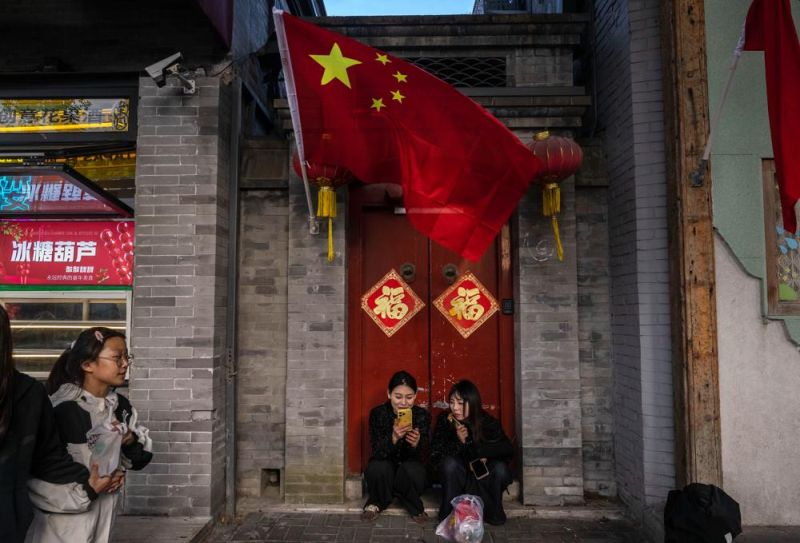By Eric Vandenbroeck and co-workers
China Is Readying for Known Challenges and
Unknown Risks

As U.S.
President-elect Donald Trump prepares to return to the White House, global
observers watch with a mix of nervousness and caution. Conversations with
Chinese academics, economists, and policy insiders reveal a far more nuanced
outlook as Beijing dissects the implications of a second Trump presidency.
Trump’s 2016 victory caught Beijing off guard, triggering a scramble to
recalibrate. But four years of navigating tariffs, tech restrictions, and trade
tensions have given Chinese President Xi Jinping and his advisors a deeper
understanding of the U.S. president’s playbook.
For China, Trump’s
return might introduce fresh risks and some limited yet meaningful
opportunities within an increasingly complex geopolitical landscape. Lessons
from Trump’s first term offer some insight, but the world has changed
significantly: China’s economy has softened, the COVID-19 pandemic has left a
lasting mark, and the Russia-Ukraine conflict has reshaped alliances. Even
Trump’s own cost-benefit calculus has evolved, and his policies now reflect the
unique dynamics of a second-term presidency. As one advisor put it, quoting an ancient adage Xi himself once
cited, “The wise adapt to the times, and the astute respond to
circumstance.”
Beijing’s high-stakes
strategy for navigating a second Trump administration involves, in the words of national security heavyweight Donald
Rumsfeld, both the known and the unknown in different quantities. Up top is the
most familiar—the “known knowns,” and chief among these is tariffs.
Unlike in 2016,
Beijing now faces Trump’s return with a sharper sense of what to expect, thanks
to his prior policies. Chief among anticipated challenges are Trump’s
intensified “reshoring” agenda and potential
tariffs—such as 10-20% on
all imports and an additional 60-100% on Chinese imports. These would pose
direct threats to China’s export-driven
economy at a time when
the country is still struggling with a slow recovery, real-estate instability,
and weakened consumer demand.
Chinese experts
foresee a hardline cabinet in a second Trump term, with figures like trade
hawk Robert
Lighthizer indicating
a more protectionist, confrontational approach. Unlike Trump’s first
administration, where voices like Steve Mnuchin occasionally tempered his
policies, a unified hawkish team would likely leave little room for moderation.
Yet Beijing has been preparing—even if not always successfully—its “dual
circulation”
strategy aims to boost domestic consumption and curb export reliance, but
results have stalled: Domestic demand lags, and export levels remain steady.
This strategic pivot is evident in a surge of Chinese investment in Southeast
Asia, as Beijing seeks to diversify its supply chains and shield its economy
from trade shocks.
To reinforce its
position, Beijing has ramped up countermeasures against U.S. companies,
shifting from firing warning shots to dealing concrete blows. Skydio, the largest U.S. drone manufacturer, faces critical
supply chain disruptions after China sanctioned it over sales to Taiwan’s
National Fire Agency, forcing the company to ration batteries. PVH Corp., the
parent company of Calvin Klein and Tommy Hilfiger, now risks
placement on China’s
“unreliable entity list” for allegedly boycotting Xinjiang cotton, jeopardizing
growth in a key market. Intel is also under scrutiny as the Cybersecurity
Association of China pushes for an investigation into alleged security flaws, threatening Intel’s
hold in a market that accounts for nearly a quarter of its revenue. These
sanctions and probes reveal a bolder stance, showing that Beijing’s arsenal for
retaliation is far stronger than it was during Trump’s first term.
Chinese experts also
see potential
blowback for the U.S.
economy. A 60% tariff could push U.S. inflation upward, potentially forcing the
Federal Reserve toward further rate hikes. Within Chinese policy circles, some
view this inflationary risk as a possible check on Trump’s ambitions, noting
that rising borrowing costs and asset volatility could dampen his support base
for aggressive tariffs.
Beyond tariffs,
Beijing is keenly aware of the limitations faced by alternative manufacturing hubs in
Southeast Asia and Latin America. Regional bottlenecks—such as labor shortages,
infrastructure challenges, and resource constraints—may prevent these regions
from fully absorbing production shifts away from China. Ironically, these
limitations could exacerbate U.S. inflation if Trump’s tariffs disrupt
established supply chains without viable alternatives.
Trump’s
anti-globalization stance is familiar, but the ideological shifts it ignites
fall into what strategists call “unknown
knowns”—factors that are understood but whose full impact remain uncertain. For
Beijing, Trump’s isolationist rhetoric resonates with a rising tide of populism
across Europe and parts of Asia, such as Italy, Hungary, and the Philippines, creating ideological undercurrents that both
challenge and complicate China’s global aspirations.
Some nationalist
voices in China view Trump’s “America First” approach as an opportunity. The logic is simple: If the United States pulls back
from global frameworks or retreats from alliances like NATO, other nations may
look to China as an alternative. But Beijing’s seasoned policy experts approach this notion with sober realism. While
China recognizes the potential for Western alliances to fragment, it also
understands that a wholesale “pivot” toward Beijing is unlikely.
European leaders may
be frustrated with Trump’s isolationism, but they remain wary of China’s
growing influence—especially given Beijing’s reluctance to condemn Russia’s
actions in Ukraine. This perceived tacit support
for Russia has
deepened European skepticism, fueling doubts about whether China’s expanding
reach aligns with Europe’s strategic interests.
For updates click hompage here